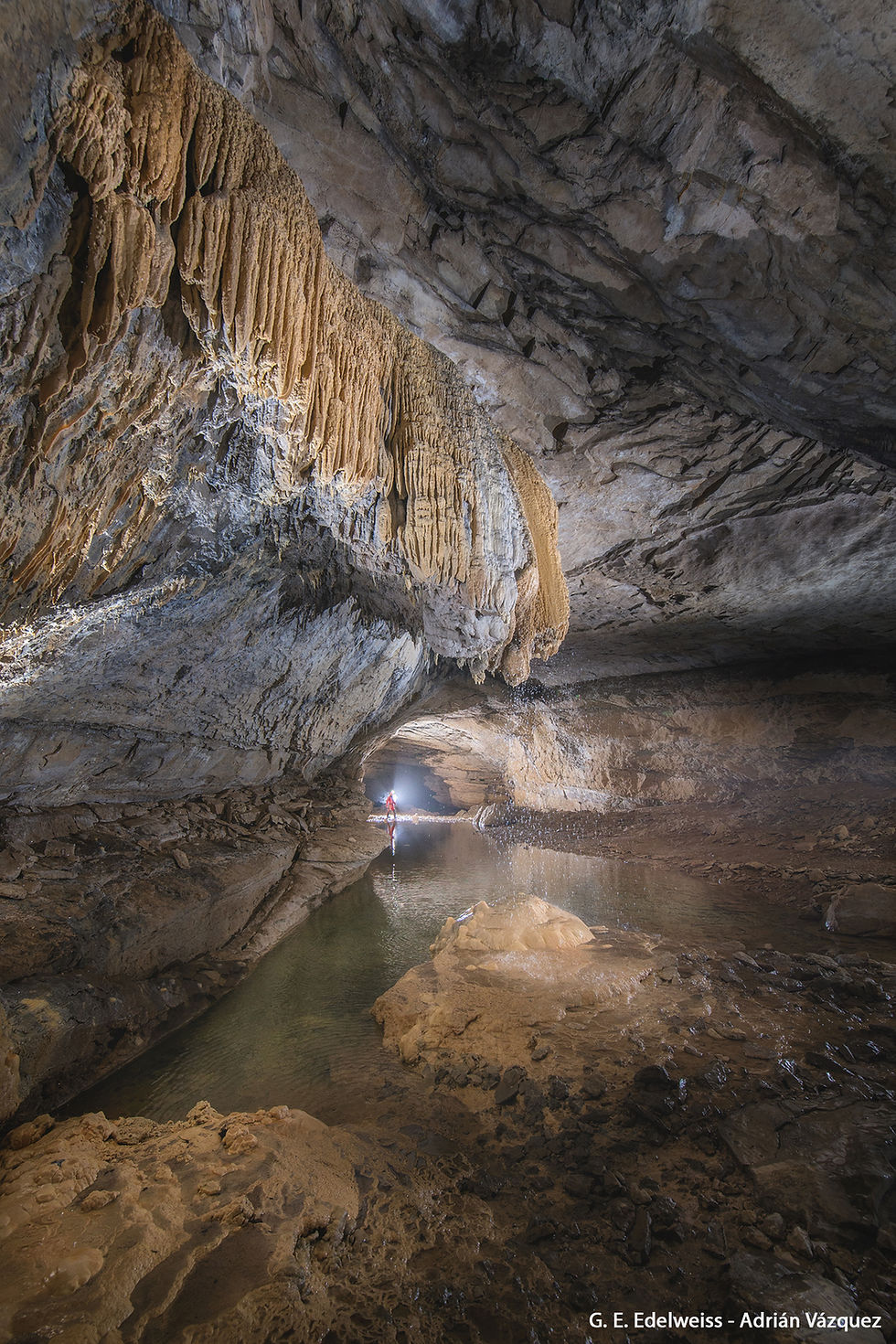
.jpg)


San Bernabé Cave Hermitage
The visit to the San Bernabé Cave consists of a tour of approximately 400 meters of gallery and the hermitage of San Tirso and San Bernabé excavated at the entrance of the cave.
The visit to its interior is intended to be an approach to the rest of the Ojo Guareña Karstic Complex, where the result of karstic modeling can be observed, consisting of the dissolution of the calcareous rock by the action of water for millions of years.
To the right of the entrance to the Cave is the Hall of the Town Hall; Currently it is used in representative acts and the day of the Pilgrimage.
During the tour of the cave, a 10-minute projection is presented. Inside we can see the Pila del Santo, the Silos gallery and the hermitage dedicated to San Tirso, although it is actually known as San Bernabé. The hermitage has anonymous wall paintings dating from 1705 and 1877, which recount the martyrdoms and miracles of the Saint; and on one of its walls is the archive of the Merindad de Sotoscueva Town Hall.
IMPORTANT: Read carefully the recommendations and tips for visiting.
Palomera Cave
The visit to the Cueva Palomera consists of a speleowalk. The cave is not conditioned and acceptable physical conditions are required. Entry is not allowed for children under 12 years of age and children under 16 years of age must be accompanied by an adult.
During the visit, for the best conservation of the cave, it is not allowed to smoke, eat, animals, take pictures, record video, or have mobile phones turned on.
The interior temperature ranges between 7º and 9º C. It is advisable to wear warm clothing
Compulsory use of suitable footwear with rubber soles, to avoid slipping.
The enhancement of this sector of the karstic complex, taking into account the existing protection figures (Natural Monument and Cultural Interest) and the characteristics of the cavity, is oriented towards tourism of nature and culture, with a certain component of adventure tourism.
%20AVF%2003.jpg)
The BEGINNING of the visit will be at the TICKET OFFICE of the Cueva Hermita de San Bernabé. At this point the monitors will be waiting for the visitors.
A helmet with a headlamp will be provided and the basic notions of safety and behavior in the Cueva Palomera cavity will be given.
From here the path begins, which gives access to the cavity, later entering the interior of the cave, where you can visit "the Edelweiss Room", "The Main Gallery", "La Sima Ailments”, “the Cacique Room” and “The Wax Museum Room”. At different points there will be stops to explain different aspects of the karstic formations as well as the microfauna that inhabits the cave. The visit will end at “El Alto Concha” or “Alto de San Bernabé”.
The visits, of reduced frequency, will be guided and with a limited number of visitors, and the adequate protection of the underground values and those existing on the surface must be guaranteed. The routes inside the cavity attend to the variety of elements of interest and the need to preserve them.
IMPORTANT: Read carefully the recommendations and tips for visiting.
%20AVF%2001.jpg)
Why visit Ojo Guareña?
-
To discover the main network of underground galleries in Spain, with more than 110 km in length.
-
To enjoy its landscape, with a relief on the surface that gives geological continuity to the cave system.
-
Because it is an area of archaeological importance, there are samples of rock art or human remains in its caves, from the Paleolithic to the present day.
-
For the scientific interest of its cave fauna.
-
Due to its fluvial system, with rivers such as the Guareña, Trema and Villamartín stream that continue to shape the karst.
-
To get to know some well-preserved towns that mark the limit between the valley and the mountains.
Photo gallery





